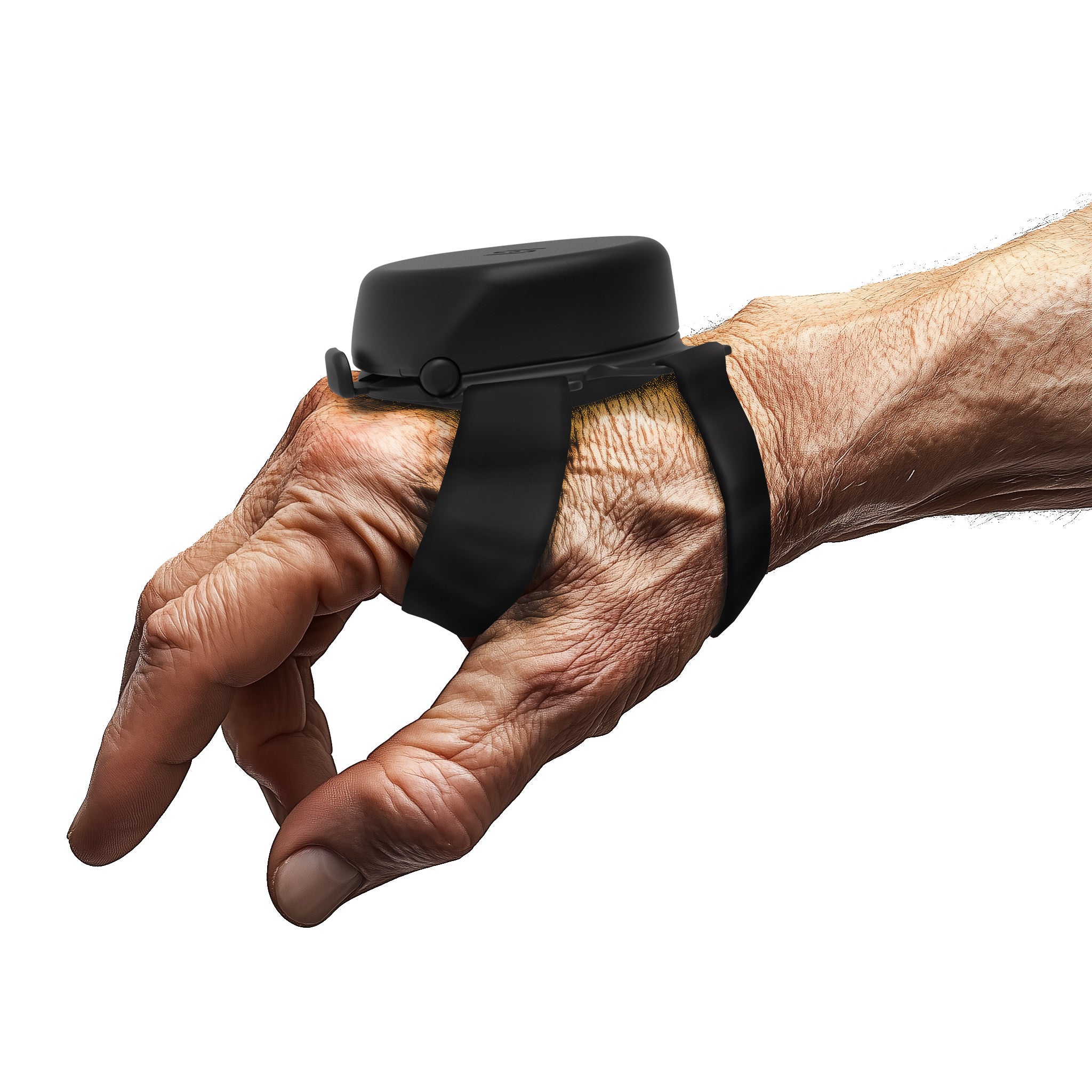Parkinson's disease is one of the more progressive and complicated neurological diseases that people usually get above the age of 60, and in some other rare instances, under the age of 50. The early Parkinson's symptoms can sneak up on you because they include things you wouldn't; think much of in the beginning, such as small handwriting, trouble sleeping, and constipation. So, it's best to stay aware of what's happening in your body and pay more attention to details. In today's blog, we will focus on the signs of Parkinson's at the early stages, and get a better understanding of how they manifest through the body.
The Early Signs of Parkinson's:
The very early Parkinson's symptoms can be subtle and tend to vary from one person to another, but they commonly include the following:
Tremor:
One of the most common early Parkinson's symptoms is Parkinson's tremor, which often appears starting from the hands and fingers, and has a resting quality, meaning that it only occurs when the affected body part is resting and significantly reduces during voluntary movement. Initially affecting only one side of the body, it is typically unilateral, but as the condition worsens, it may spread to both sides. The tremor known as "pill-rolling" is a well-known example, in which the thumb and forefinger move in a circle.
Constipation:
Another early Parkinson's symptom is difficulty and issues with bowel movements. This usually happens due to the slowing down of the autonomic nervous system, which impacts gastrointestinal motility. It is a commonly overlooked sign that can lead to some serious discomfort. In addition to bowel obstruction, severe episodes of constipation can also cause bloating, pain in the abdomen, and a sensation of incomplete evacuation. Dietary adjustments, drinking more water, and even using medicine to encourage bowel movement are all suitable options for managing chronic constipation related to Parkinson's symptoms.
Mood Changes:
The symptoms of Parkinson's disease cause alterations in brain chemistry that can lead to mood changes such as depression, anxiety, or apathy. Such psychological symptoms tend to show up before the physical ones, so this is also another one of the important signs of Parkinson's that you should keep an eye out for. Depression linked to Parkinson's disease is related to changes in brain chemistry rather than just a reaction to the diagnosis. Such depressive episodes usually come in conjunction with panic episodes, social anxiety, and a form of generalized anxiety, depending on the patient's environment. Addressing these symptoms early on through counseling and medication can significantly help manage Parkinson's symptoms more effectively.
Reduced Sense of Smell:
A reduced sense of smell is another good example of the overlooked early Parkinson's symptoms, especially since it's one of the symptoms that people commonly notice years before their other Parkinson's symptoms start appearing. This symptom in particular is believed to be the outcome of olfactory pathways becoming involved early in the development of the disease. The condition may make it difficult to enjoy food and beverages because taste is largely determined by scent. A diminished sense of smell can also compromise safety since it makes it more difficult to identify damaged food, gas leaks, and smoke.
Sleep Disturbances:
Trouble sleeping is a common early Parkinson's symptom. It mainly causes serious difficulties falling asleep, frequent awakening, and REM sleep behavior disorder, similar to sleepwalking, but in this case, the person acts out their dreams. This can have a significant negative impact on a patient's health and overall quality of life as sleeping is a crucial part of our everyday lives. Poor sleep at night can cause daytime weariness and excessive sleepiness, which can worsen other Parkinson's symptoms and make it harder to function in everyday life.

Facial Masking:
Facial masking is one of the signs of Parkinson's that causes your face to lose its expression. Also known as hypomimia, this condition causes reduced smiling, frowning, or other expressions due to muscle rigidity and bradykinesia that affect facial muscles. As the person may believe that others are not truly understanding or perceiving their emotions, this symptom over time can heighten feelings of loneliness and isolation.
Rigidity:
Muscle stiffness, or rigidity, is another common one of the early Parkinson's symptoms. This symptom usually starts appearing in the limbs or neck, making it difficult for patients to move freely. This inflexibility may result in a restricted range of movement and pain that is occasionally referred to as aches or cramps in the muscles. Parkinson's rigidity is different from the stiffness that follows exercise in that it persists despite stretching and resting. In addition to causing pain and discomfort, this rigidity can impede movement and contribute to a hunched posture. The stiffness related to Parkinson's symptoms could result in a generalized sense of muscle exhaustion and decreased dexterity.
Postural Instability:
Problems with motor functions, balance, and body coordination are among the critical early Parkinson's symptoms that should be immediately addressed. Postural problems are one of the Parkinson's symptoms that leads to reduced ability to maintain a straight posture, which causes Parkinson's disease patients to fall more easily than others. As the condition worsens, this instability—which is frequently brought on by a mix of bradykinesia and muscle rigidity—becomes increasingly noticeable. People may struggle to regain their sense of balance when shoved or when they move suddenly. This may result in a higher risk of injury and falls, making the usage of assistive equipment like walkers or canes necessary. Postural instability can seriously limit movement and freedom in extreme situations.
The Role of Our Steadi-Two Solution:
Being fully committed to providing Parkinson’s disease patients with the assistance they need to cope with their Parkinson's symptoms, we’ve created a new cutting-edge piece of technology that works to reverse Parkinson's tremor, making your daily life easy again.
Our Steadi-Two glove's design is based on tried-and-true vibration absorber technology to stabilize buildings against earthquakes, so it can withstand any degree of hand trembling. The vibrating disk stabilizes you by moving against the direction of your Parkinson's tremor, moreover, it's portable, requires no batteries, and is simple to operate, making it the only assistance you’ll need throughout your day.
FAQ:

How to Identify Parkinson's Tremor?
Identifying a Parkinson's tremor involves recognizing its unique aspects and characteristics, which is crucial among the various Parkinson's symptoms. Usually, a Parkinson's tremor only occurs at rest and often subsides the movement of the body. The tremors related to Parkinson's start on just one side of the body, and then make their way to the other as the disease slowly progresses, with a consistent amplitude and a very specific frequency of 4-6 beats per second. One good example of Parkinson's tremors is the pill-rolling movement that is often associated with the disease, which causes the thumb and forefinger to move in a circle. These traits serve to differentiate Parkinson's disease from other neurological conditions, along with other symptoms such as bradykinesia, stiffness, and postural instability. Early detection of these symptoms can result in prompt diagnosis and improved disease care, hence improving the pace and the odds of the treatment plan.
What are The Signs that Parkinson's Symptoms are Getting Worse?
Parkinson's symptoms get worse as the disease progresses over time, with the Parkinson's tremor becoming more pronounced and spreading to both sides of the body. Additionally, the degree of muscle rigidity increases, resulting in notable stiffness, discomfort, and a hunched-over position. In addition, as postural instability rises, there is a greater chance of injury and more frequent falls. Walking also becomes more difficult, with shorter steps, a shuffling stride, and bouts of "freezing." Cognitive decline may become apparent, accompanied by worsening memory loss, focus problems, and difficulty making decisions. Mood disorders, such as anxiety and depression, can worsen and have a major negative influence on the quality of life. Furthermore, autonomic dysfunctions such as extreme constipation, urological issues, and blood pressure swings could get worse. The worsening symptoms of Parkinson's disease require constant medical supervision and modifications to treatment plans to control the disease's course and preserve the highest quality of life.
How Quickly Do People Deteriorate with Parkinson's?
It is challenging to predict with certainty how each person's Parkinson's disease will advance. Since every Parkinson's patient is different, there may be a wide range of symptoms. Parkinson's, however, is a progressive disease, so over time, symptoms can become worse or emerge in unexpected ways.
What’s The Link Between Parkinson’s Disease and Dementia?
Parkinson's disease can lead to changes in the chemical composition and structure of the brain, which can impair thinking and memory. This is because the Parkinson's disease-related protein alpha-synuclein forms sticky clusters known as Lewy bodies, which can impair cognitive function and cause dementia. Parkinson's disease initially manifests as physical symptoms, but as the condition worsens, almost 4 out of 5 patients experience dementia, which can lead to severe memory loss and make it difficult to maintain connections. Additionally, cognitive issues, such as difficulty concentrating and forgetting things, may appear later.

Learn more about the Steadi-Two- a revolutionary glove designed to reduce hand tremors.
In Conclusion:
Parkinson’s disease is very hard to manage, but there are still many ways to cope with it and many treatment plans to follow. Work closely with your doctor and keep updating them about your condition to keep adjusting your treatment accordingly and get the results you’re seeking.



